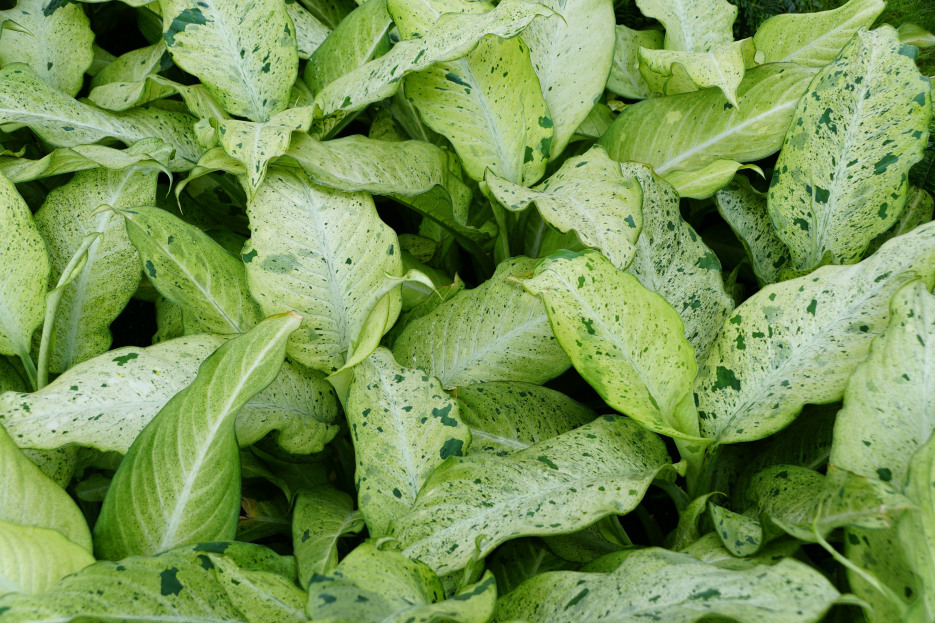
If you love dramatic foliage with a tropical twist, Dieffenbachia ‘Camouflage’ might be your next favorite houseplant. This eye-catching cultivar is named for its unique, variegated leaves, which feature soft, creamy patterns splashed over a canvas of mottled greens—resembling natural camouflage.
As part of the Dieffenbachia family (commonly known as Dumb Cane), this variety brings both visual impact and easygoing care to your indoor jungle. With the right conditions, it grows upright with large, lush leaves that make a striking statement in any room.
Dieffenbachia ‘Camouflage’ prefers bright, indirect light. A spot near an east or north-facing window is ideal. Too much direct sun can scorch the leaves, while too little light may cause leggy growth and dull, faded colors.
It can tolerate lower light better than many houseplants, but the variegation really pops with moderate to bright filtered light.
Water when the top 1 to 2 inches of soil are dry. Dieffenbachias like to be kept evenly moist, but not soggy. Overwatering can lead to root rot, especially if the pot doesn’t drain well.
During spring and summer, expect to water more often. In fall and winter, cut back and allow your plant to dry out a bit more between waterings.
Always empty saucers after watering to prevent standing water.
As a tropical plant, Dieffenbachia ‘Camouflage’ enjoys moderate to high humidity. While it can adapt to average home levels, it will truly thrive with a bit of added moisture in the air. Consider:
Keep it in temperatures between 65–80°F (18–27°C), and protect it from cold drafts, A/C blasts, or sudden temperature drops. Avoid exposing it to temperatures below 60°F (15°C).
Use a well-draining, peat-based soil mix. A blend of potting soil with added perlite or orchid bark will help retain moisture without becoming compacted.
Ensure the pot has good drainage holes, and repot every 2–3 years or when the roots become crowded.
Feed every 4–6 weeks during the growing season (spring through early fall) using a balanced liquid fertilizer diluted to half strength. Too much fertilizer can burn the roots or cause leaf tips to brown.
Hold off on feeding during winter when the plant’s growth naturally slows.
Prune to control height or remove yellowing leaves. You can trim back stems just above a node to encourage bushier growth. Always use clean, sharp scissors or pruners.
Wipe large leaves regularly with a damp cloth to remove dust and keep them glossy and healthy.
Dieffenbachia can be propagated through stem cuttings:
Propagation is best done in spring or early summer.
Caution: Dieffenbachia ‘Camouflage’ is toxic to pets and humans if ingested. It contains calcium oxalate crystals, which can irritate the mouth and digestive tract. Keep it away from cats, dogs, and small children.